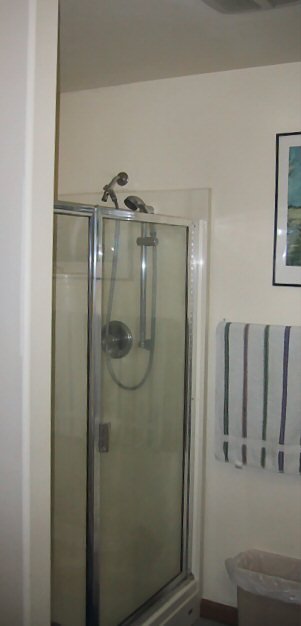T
TromboneAl
Guest
I'm considering extending the glass by the shower all the way to the ceiling. This would help the two problems with that shower:
1. We keep the room cold, so there's a lot of weiny-shrinking cold air around when showering.
2. There's a lot of condensation, tending to cause mold, in that bathroom.
Anybody's shower totally enclosed (I don't mean 100% air tight).
1. We keep the room cold, so there's a lot of weiny-shrinking cold air around when showering.
2. There's a lot of condensation, tending to cause mold, in that bathroom.
Anybody's shower totally enclosed (I don't mean 100% air tight).


